By Crasterfarian
In previous articles, we’ve explored the layered religious landscape of the Roman North — from the reused pagan site at Hartburn, where Dr. Sharpe carved a church into the sandstone cave, to The Hermitage and its possible Mithraic roots. These places remind us how vital religious practice was to Roman soldiers stationed far from home.
Faith offered structure, comfort and the hope of divine protection — especially at the Empire’s wild northern edge. It would also have given them something to do on those long, cold Northumbrian winters: a distraction to reduce rebellious feelings of dissent. Like all modern religions, it was also a control method.
No site captures that sense of sacred space better than Brocolitia, the fort more commonly known today as Carrawburgh.
Buried safely under gentle grassy mounds, the fort remains largely unexcavated. However, just beyond its western rampart lies one of the most concentrated collections of Roman religious sites in Britain: three shrines and a bathhouse, all clustered within a shallow hollow by a boggy stream.
This place is steeped in spiritual significance — where water, gods, and bathing (the most basic of rights) all come together in ritual. And the entire site was discovered by chance… thanks to a herd of cows.
“The Grass Seemed Fresher…”
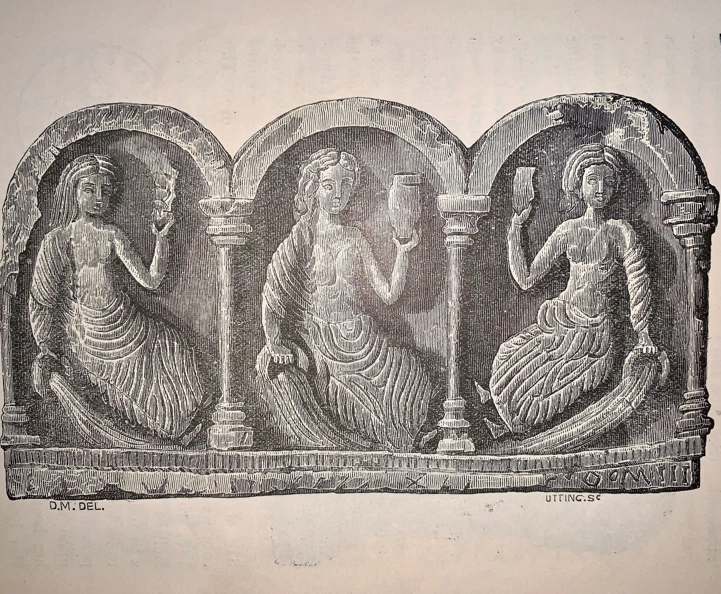
The sacred well at Carrawburgh was rediscovered entirely by accident during a long drought in the 18th century. Dr. Collingwood-Bruce, the great chronicler of Hadrian’s Wall, recorded the tale:
“Many summers ago, a severe drought prevailed, and the farmer had to drive his cattle twice a day a considerable distance to water. He felt sure that this ought not to be the case. He knew that the Romans never planted a station where a good supply of water could not be found. He carefully examined the vicinity of the station, and, fancying that in this spot the grass seemed fresher than in other places, he broke the surface. His antiquarian knowledge was rewarded by finding here a well cased with Roman masonry and containing plenty of water.”
What that farmer uncovered was Coventina’s Well, a sacred spring dedicated to a local water goddess. And what a find it turned out to be.
A LIDAR image shows the layout of the fort and the location of the shrines, all numbered.
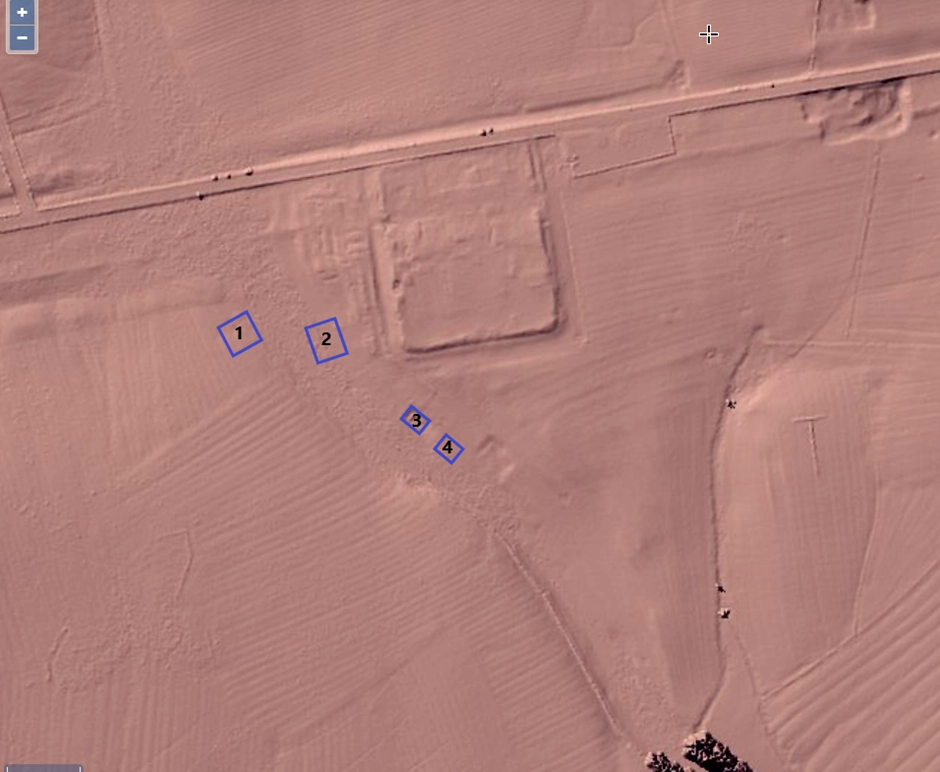
1. Coventina’s Well
Enclosed by a small stone temple, this shrine is believed to have been constructed alongside the Vallum, the great earthwork south of the Wall (mentioned in an earlier article). It may have originally stood alone before the fort was added.
When excavated in the late 19th century, the site yielded over 16,000 coins, along with altars, jewellery, shoes, and a triple statue of the goddess Coventina herself. (The first image above).
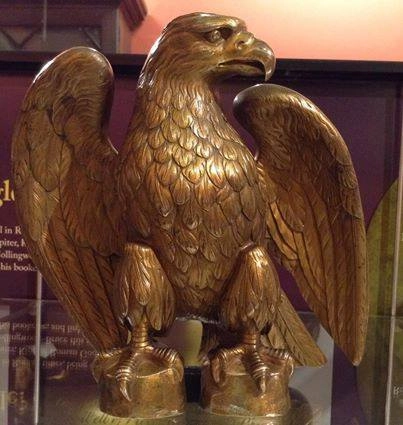
So many bronze coins were discovered that 3,000 were melted down to cast a bronze eagle, which was later presented to John Clayton, the famed Victorian preserver of Hadrian’s Wall. That eagle now rests in the Clayton Museum at Chesters Fort, also once owned by Clayton — and a site well worth visiting.
Many of the other finds were originally displayed at the Museum of Antiquities in Newcastle but have since been re-sited in the Great North Museum, where they form part of their superb Roman Wall exhibit.
2. The Fort’s Bathhouse
Nearby lies the fort’s thermae, similar in layout to the one at Cilurnum (Chesters), but on a smaller scale. Though fragmentary today, it would have been central to daily life, a place not just for washing, but for socialising and ritual cleansing.
That it sits so close to sacred water reinforces the Roman connection between physical and spiritual purification.
I can just imagine a lazy afternoon in the bathhouse, with oil and strigil (scraper) to cleanse the body, and a plunge into the cold pool at the end, a real social experience for the band of brothers huddled on this northern frontier.
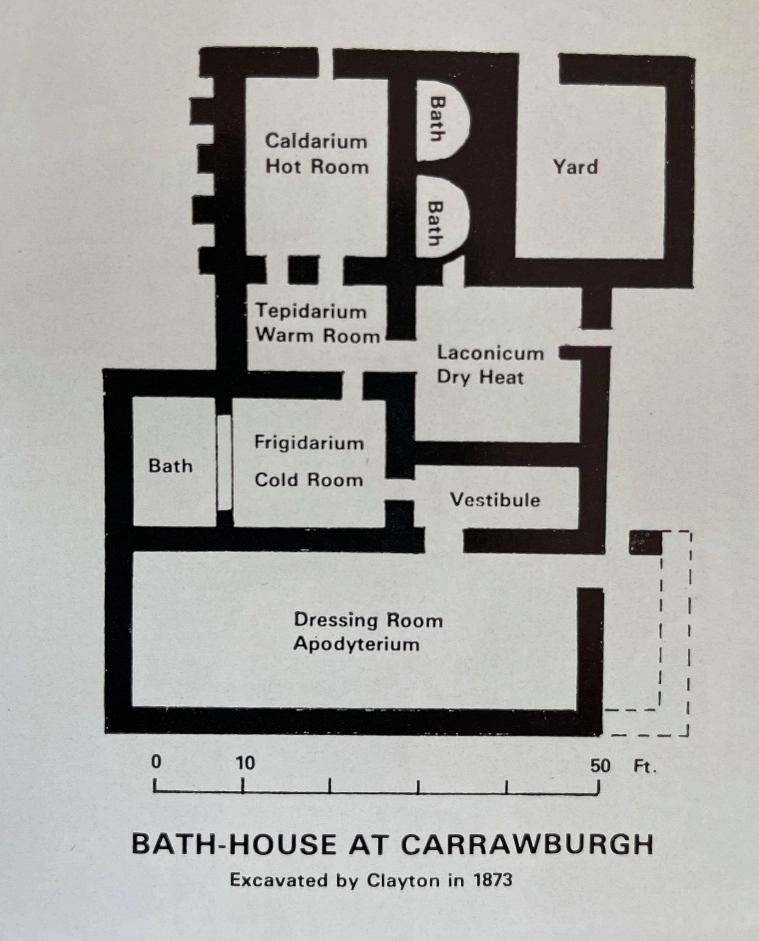
3. The Temple of Mithras
Walking south around the end of the fort from the car park, the sunken Mithraeum is laid bare to the elements.
The cult of Mithras was hugely popular among Roman soldiers and this temple dedicated to him was deliberately destroyed by early Christians, likely in the 4th or 5th century, during efforts to erase and suppress pagan worship. On my last visit, some modern pilgrims had left a few pennies as offerings on the central altar — superstition still runs deep in many.
Incredibly, when archaeologists excavated the site in the 1950s, they discovered something astonishing… The three original altars were still in situ, standing just as they had been left nearly 1,600 years earlier. The altars now at the site are replicas; the originals, incredibly well preserved, are on display in the Great North Museum in Newcastle. One shows Mithras slaying the bull, a central image of the cult, symbolising death and rebirth.
The layout of the temple, half-subterranean and cave-like, reflects the inner mysteries of the faith: initiation, secrecy and ritual feasts. It’s a surrogate cave, built up from the ground, unlike the real caves used at Hartburn Glebe and The Hermitage. The symbolism here mirrors what we saw at Hartburn. Just as the niches in Dr. Sharpe’s cave church once held Cautes and Cautopates, Mithras’ torchbearers, so too did this place. The originals of these still stand sentry in the replica temple at the Great North Museum. These shared elements hint at a continuous thread of sacred meaning, from Roman mystery cults to early Christian reinterpretations.

4. The Nymphaeum
Directly opposite the Mithraeum entrance stands the Nymphaeum, a shrine to the Nymphs, spiritual guardians of fresh water. Also excavated in the 1950s, this shrine reveals yet another layer of belief in the healing and divine power of natural springs.
You can see how close the two temples are in the sketch below, the edge of the Mithraeum showing on the right-hand side.
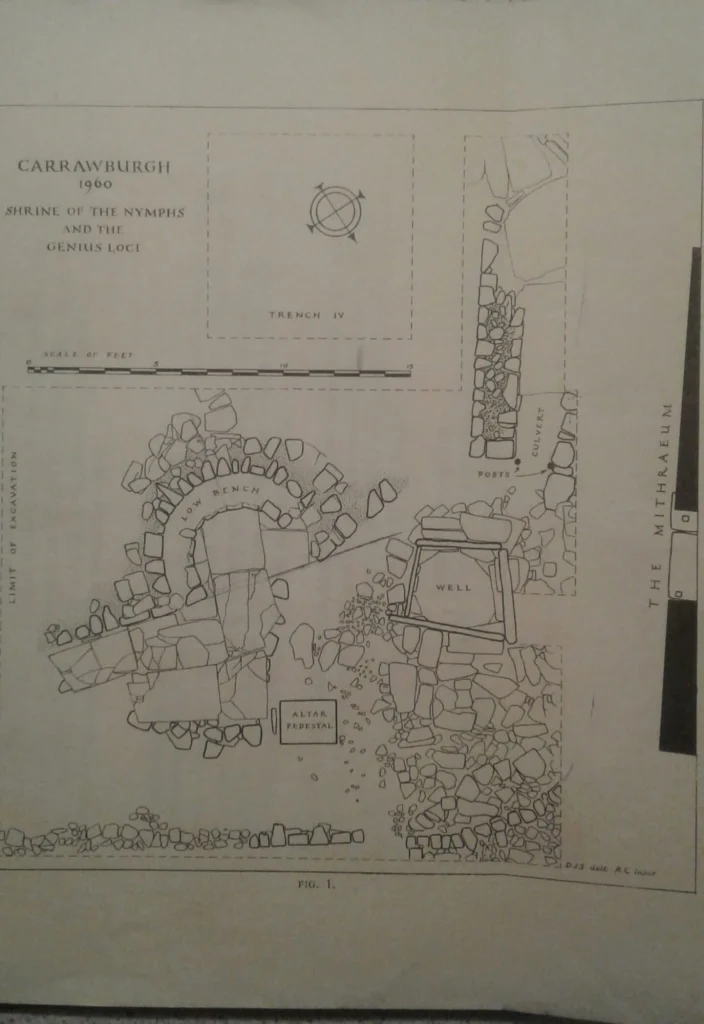
A Landscape of Belief
The fact that three shrines, a bathhouse and a sacred spring all lie so close together in this quiet spot tells us something important.
Brocolitia was more than a garrison, it was a spiritual sanctuary on the frontier. It was their home.
The Romans stationed here weren’t just defending a wall, they were living their lives, trying to make sense of the world through ritual, offerings and faith. They weren’t on detachment. They were putting down roots, roots of belief, of families and of community.
Their vicus (civilian settlement) would have been nearby. There would have been taverns, shops, brothels, families, children playing and soldiers drinking with their marras. A real community, stitched together by the might of Rome, and the eagle banner they had all sworn allegiance to.
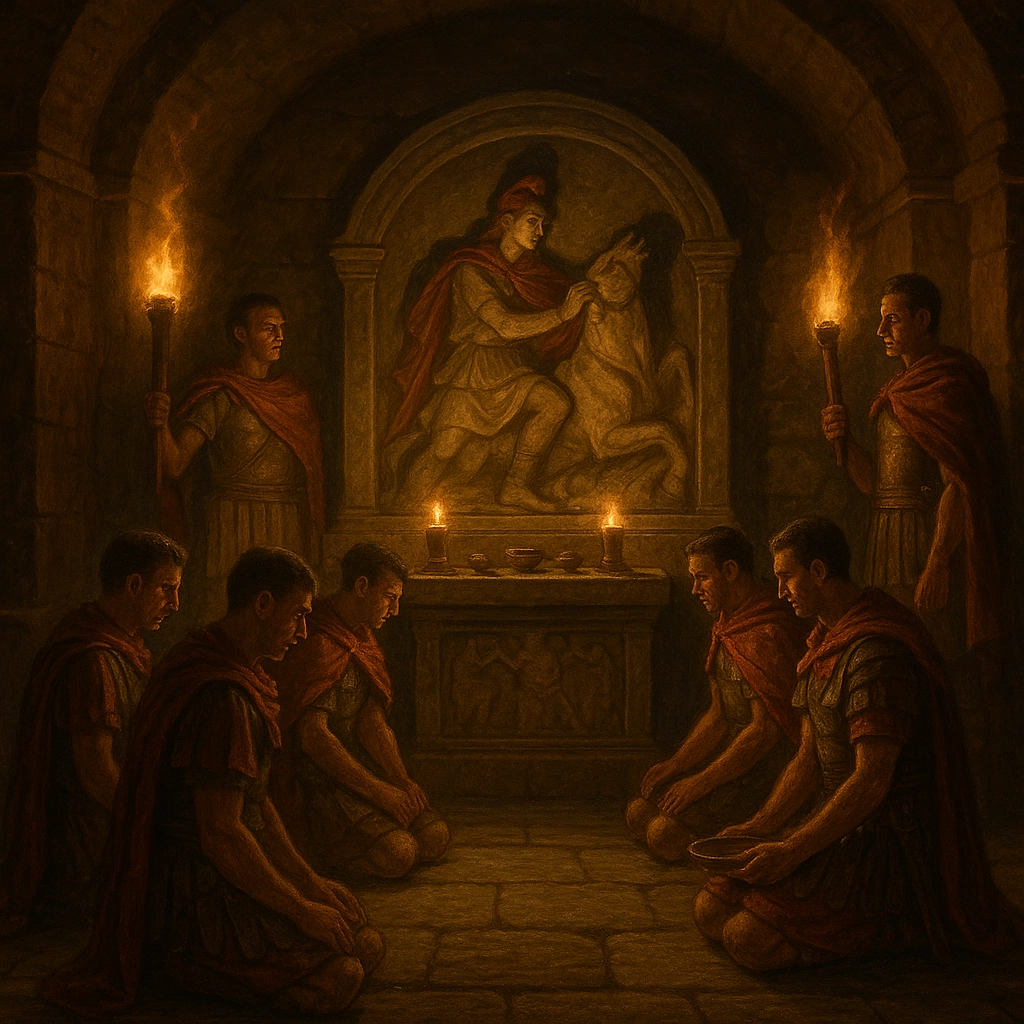
As with Hartburn and The Hermitage, the spiritual echoes still linger. Coins lie at the bottom of springs. Statues, once toppled, now sit behind museum glass. Temples, buried for centuries, are now open to the sky.
And yet, the land still remembers, in this quiet, sacred hollow, a place of gods, water, sacrifice and whispered prayers.
With Love from the Crasterfarian XX

